Door closers help to close the door without much effort. However, they are wrong ...
|
|
During the colds on the roofs and water flow systems, ice forms, which ... |
More and more city residents dreams of leaving their apartment and leaving away from ... |
How to make grounding at home correctly
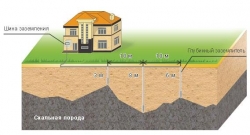
Modern apartments and houses, regardless of whether they are located in large cities or small settlements, are saturated with electrical appliances for various purposes. People strive to use the available benefits of civilization in full.
Almost every house today has a large set of household appliances, from large boilers, washing machines, air conditioners, garden and construction manual power tools, to small kitchen electrical appliances, televisions, audio technology, computers, hair dryers, medical devices, communications equipment and communication equipment and communication equipment and technology recreation.
This whole technique either directly works on electricity or uses it to maintain in a working state using charging devices. Electric devices surround us everywhere at home, at work, in public places. We can say that electricity penetrated our whole life.
Table of contents
- What is the ground for
- Grounding in an old house
- House grounding systems
- How to make grounding at home
- How to make repeated grounding
What is the ground for
Meanwhile, electricity is a great danger and requires competent handling of electric consumers. This danger consists in electric shock. In case of random or emergency voltage entering the housing or other parts of devices that are not under voltage, this may be deadly. The grounding of a residential building is aimed at preventing this danger.
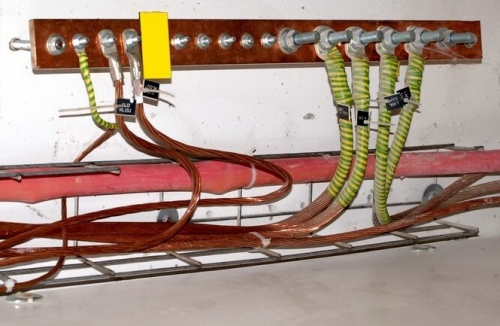
The main document, which sets out the requirements for protective grounding, is PUE (rules for the installation of electrical installations). This document provides for two types of grounding depending on the function performed: working and protective. Working grounding refers to the professional type of work, in domestic conditions it is not required to perform it. Therefore, the protective grounding of the house will be considered in the future.
Grounding in an old house
In the old house, everything is more complicated. The new household appliances are not connected to the old sockets, the fork is not suitable. And the instructions for the equipment indicate that it is strictly forbidden to use it without grounding. We have to figure out whether there is and in what condition is grounding in a panel house if it is an old building or, especially grounding in a wooden house. In recent times, household appliances did not require grounding, and grounding in old houses was optional. With the advent of modern technology, this issue has to be resolved again. This is especially true for old private houses. In the vast majority of cases, grounding in a private house is absent.
House grounding systems
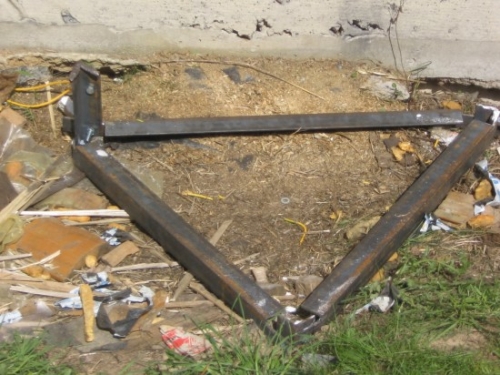
Power supply of residential buildings is carried out only through networks with deaf -eared neutral. For such networks, GOST R 5051.2-94 regulates the use of grounding according to TN and TT schemes.
A feature of the TN system is that the grounding parts of consumers are connected to the neutral of the power source with zero conductors. Includes three schemes:
- TN-C. Zero conductors - working and protective are represented by one conductor along the entire length of the line. It is widespread in old houses. It is not recommended to use.
- TN-C-S. Similar to the TN-C subsystem, but at the input into the house, the general conductor is broken into a zero working and separately zero protective. In this case, it is required to perform an additional repeated grounding of a residential building. Recommended in return TN-C.
- TN-S. The zero conductors of the working and protective are laid separately along the entire length of the line. Provides the greatest safety. Recommended in modern construction. It requires the use of a five -widow in a three -phase network, and in a single -phase three -core cable.
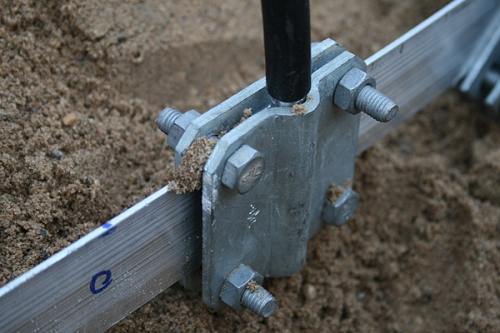
Unlike the previous system in the TT system, a delayed neutral of the power source is not connected by conductors with grounded parts of consumers. For protective grounding of consumers, a separate grounding device is necessary. The use of the TT system was previously prohibited. Now its use is possible, but only if the RCD is installed in the house. At least one at the entrance to the house. The most appropriate and economical grounding systems are for a private house according to TN-C-S and TN-S schemes.
How to make grounding at home
In order to decide on how to properly make the grounding of the house, you need to find out which of the grounding systems was used in the power line brought to the house.
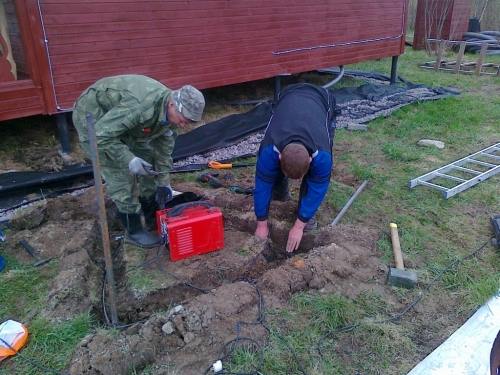
In old power supply systems, the three -phase system is made by a four -core cable, and a single -phase two -core. There is no special core for protective grounding. And zero vein is grounded at a source of electricity. That is, the grounding scheme of the TN-C house is used. In most cases, this is precisely such an electricity eyeliner was carried out to the houses of the private sector. Therefore, grounding in a private house has to be done again. In this case, it is required not only to make the grounding circuit of the house outside, which is part of the repeated grounding, but also redo the internal wiring. As a result, the grounding scheme for a private house is implemented by TN-C-S type.
If in the cable summed up to your house there is a special vein for protective grounding, then it is possible to implement the TN-S scheme. It may only be required to perform re -grounding the house only if it is necessary for its lightning protection.
To perform grounding a private house with your own hands correctly and with the expectation for a long service life, it is not at all necessary to be a professional electrician.
We begin the consideration of the issue of how to make grounding at home, from a simpler case. Imagine that electricity is brought to your house according to a modern scheme with a special residential for protective grounding. In this case, the grounding work will only be performed inside the house. In the shield where the cable is entered, there should be two tires:
- for zero cable veins;
- for veins of protective grounding.
The zero tire should be isolated from the shield case, and the grounding is fixed directly to the case with the provision of electrical contact. Zero and grounding veins are connected to the corresponding tire. In this case, the connection of the tires is strictly prohibited. The eyeliner to each consumer requiring grounding should be performed by a three -wing cable. The grounding core should join the contact intended for this. All sockets in the house should be with ground (Euro -zoom).
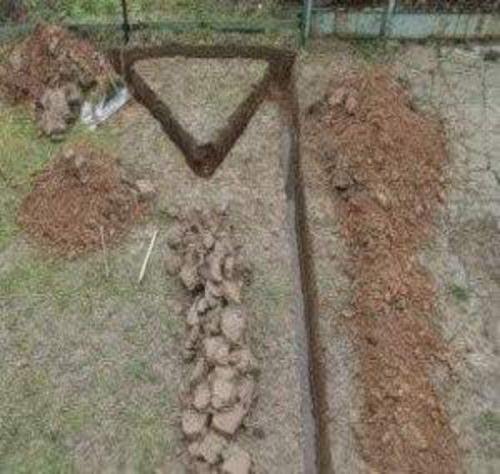
If the electricity eyeliner is made by a cable without grounding core, in the introductory shield, it is necessary to split zero core. The shield should still be zero and grounding tires. But in this case, it is necessary to connect them with each other. And to consumers, as in the first case, two cores zero and grounding from the corresponding tires should be summed up. This is called the splitting of zero core. In this case, the grounding tire should be connected to a repeated ground, built directly near the house.
How to make repeated grounding
Repeated grounding is certainly necessary when using TN-C-S and TT grounding schemes. When using the TN-S circuit, it may be required for the device of lightning protection. Repeated grounding is equipped directly near the grounded house. Structurally, such grounding includes a grounding ground and a grounding conductor. As a grounding truck, a metal pin, corner, pipe are used. Usually, not one, but several grounding conductors are used. Most often, three grounding grounds are taken, from which a contour in the form of a triangle is formed. The distance between the grounding grounds should be about 2 m. The grounding grounds are clogged to a depth of at least 2-3 m. A shallow trench is born between them (approximately 50 cm). Horizontal connectors usually made of strip metal are laid in it. All grounding conductors are interconnected in the form of a closed circuit. The best way to combine welding. From the contour, a grounding conductor connecting the grounding circuit with a ground tire in an introductory shield is also laid from the circuit. It is not difficult to make such a grounding device at home. But it is better to make grounding in a private house using typical sets offered by industry, for example, Zandz-6, or sets for the implementation of typical grounding schemes: Voronya Lap, combined grounding, a closed circuit circuit.
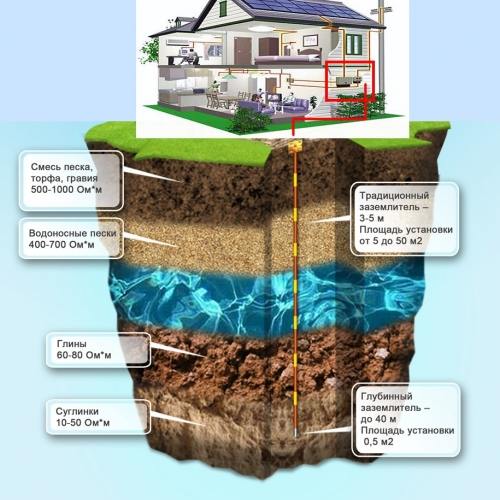
The use of such sets guarantees the correct grounding of the house and ensure the safety of people when working with electrical appliances.

Aspiration and
Aspiration and fire systems. VSDA equipment at a discount
All equipment is new, serviceable - sold at a discount.
Phone for communication +79671771818
List of aspiration systems and products VESDA (everywhere):
Vesda VLS-505 2 pieces
Vesda VLF-250-01 2 pieces
Vesda VLF-500-00 2 pieces
Vesda VLF-250-00 3 pieces
Vesda VLS-214 1 tablet
Vesda VLC-500 1 piece
Vesda VLP-400 2 pieces
Vesda VLP-002 2 pieces
Vesda VLP -000 1 piece
Vesda VHX-0200 2 pieces
Vesda VRT-K00 2 pieces
Vesda VRT-100 1 piece
Pipes 25 mm, 8-10 mm, pipe connectors, air intakes, filters.